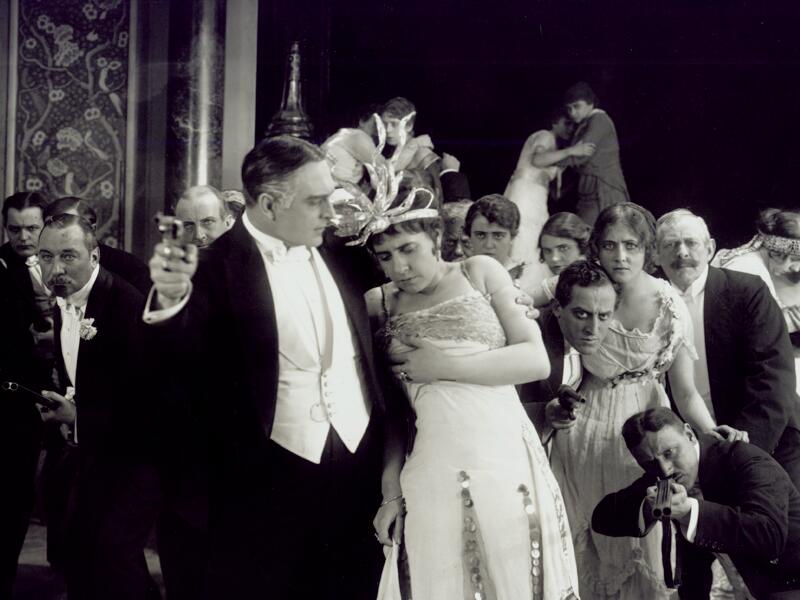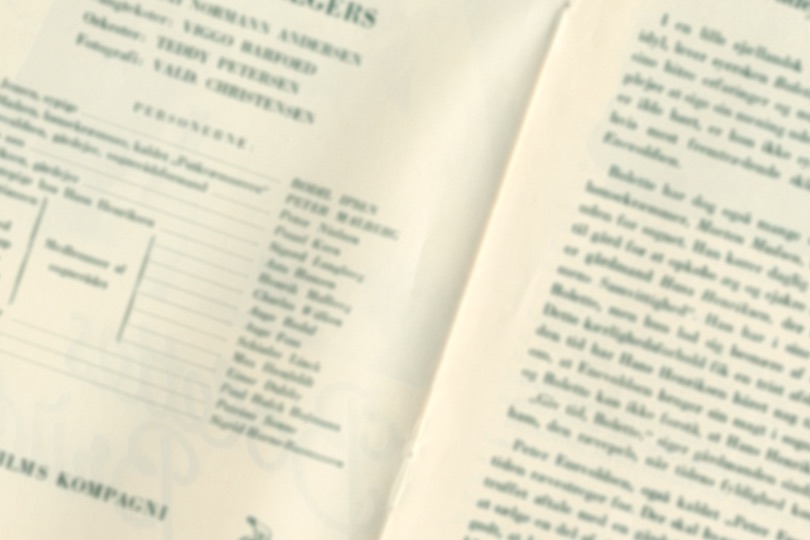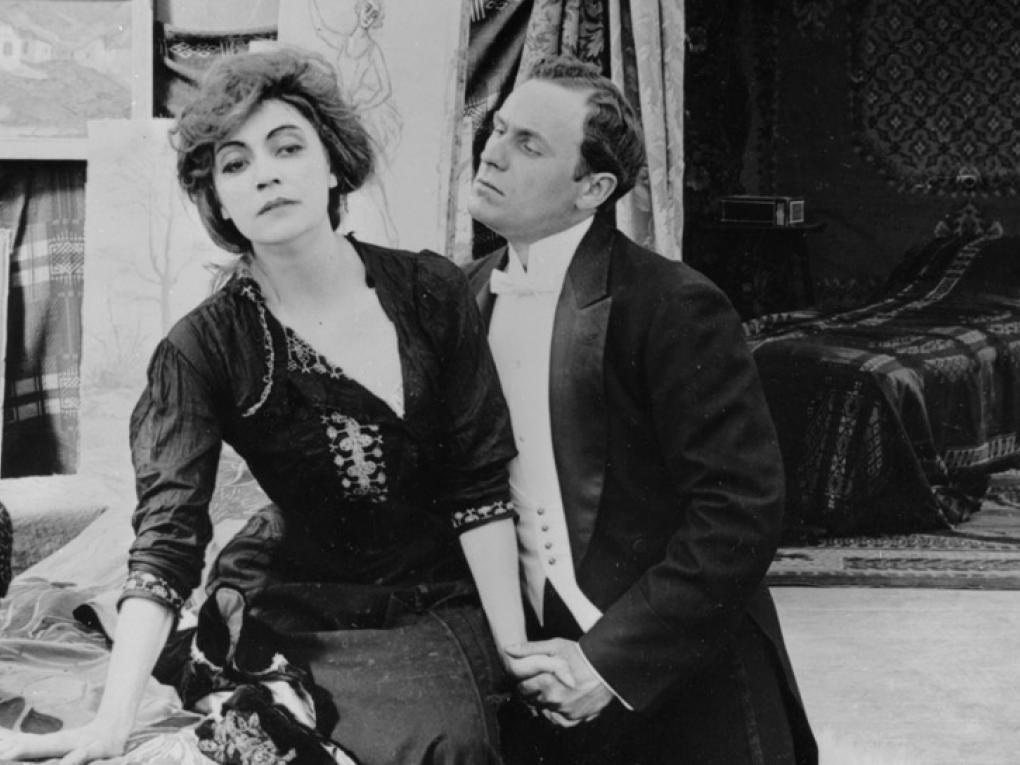enda
Film
The Flaming Sword
August Blom, Denmark, 1916
73 min.DK/FeatureDrama, Melodrama, ActionSilent films

A mine foreman has two daughters, the fair Edith and the dark Dina. Edith falls in love with the ship's mate Reymers, while Dina runs away with the unscrupulous capitalist Stoll. When the rumor spreads that a comet is on a collision course with Earth, Stoll exploits the situation to make a killing on the stock market. On the eve of the comet's impact, Stoll gathers his friends for a great orgy, but enraged workers storm his grand villa, egged on by Dina's jilted ex-fiance. He, Stoll and Dina all perish. Fire rains down from the sky, and the seas flood the land. The Earth is laid waste. Only two survive: Edith and Reymers, and the film ends with their miraculous reunion.
Inspired by the fear evoked by Halley's comet in 1910, this film was clearly adressed to a public in an age of war where the old order was collapsing. It carries great conviction, thanks to excellent acting and clever use of locations. The camerawork is first class; throughout, the film's images are carefully and elegantly composed. To create scenes of Earth-shattering disaster that would carry conviction must have been the greatest challenge for Blom and his technicians. Special-effects technology was practically non-existent, and financial resources were not unlimited, but the scenes of the cataclysm are surprisingly effective. Fiery sparks rain down from above, quickly shrouding everything in a pall of smoke. While this is obviously an economical solution to the problem of showing the disaster, the effect is eerie, unsettling, and convincingly apocalyptic. Most important of all, the ending, which in summary may sound prepostrously contrived, is in fact dramatically fitting and genuinely moving.
Inspired by the fear evoked by Halley's comet in 1910, this film was clearly adressed to a public in an age of war where the old order was collapsing. It carries great conviction, thanks to excellent acting and clever use of locations. The camerawork is first class; throughout, the film's images are carefully and elegantly composed. To create scenes of Earth-shattering disaster that would carry conviction must have been the greatest challenge for Blom and his technicians. Special-effects technology was practically non-existent, and financial resources were not unlimited, but the scenes of the cataclysm are surprisingly effective. Fiery sparks rain down from above, quickly shrouding everything in a pall of smoke. While this is obviously an economical solution to the problem of showing the disaster, the effect is eerie, unsettling, and convincingly apocalyptic. Most important of all, the ending, which in summary may sound prepostrously contrived, is in fact dramatically fitting and genuinely moving.
| Original title | Verdens Undergang |
|---|---|
| Danish title | Verdens Undergang |
| International titles | Flammesværdet, Det flammande svärdet, A espada chamejante, La espada flamígera, L' épée flamboyante, The End of the World |
| Other titles | Flammesværdet |
| Director | August Blom |
| Screenplay | Otto Rung |
| Director of Photography | Louis Larsen |
| Production designer | Axel Bruun |
| Appearance | Olaf Fønss, Carl Lauritzen, Ebba Thomsen, Johanne Fritz-Petersen |
| Production country | Denmark |
| Domestic distribution | Fotorama |
| Technical info | 1650 meter, 35 mm, Normal, Black/white, Silent |
| Danish theatrical release | 01.04.1916 |
| Cinemas | Palads |
| Danish rating | Allowed for all |
Companies |
|
| Production company | Nordisk Films Kompagni |
| Domestic distribution | Fotorama |
|
|
|
Direction |
|
| Direction | August Blom |
|
|
|
Script |
|
| Script | Otto Rung |
|
|
|
Cinematography |
|
| Cinematography | Louis Larsen |
|
|
|
Production design |
|
| Production design | Axel Bruun |
|
|
|
Appearance |
|
| Frank Stoll, mineejer og børsspekulant | Olaf Fønss |
| Mineformand West | Carl Lauritzen |
| Dina, Wests datter, forlovet med Flint | Ebba Thomsen |
| Edith, Wests datter | Johanne Fritz-Petersen |
| Minearbejder Flint | Thorleif Lund |
| Styrmand Reymers | Alf Blütecher |
| Den vandrende Prædikant | Frederik Jacobsen |
| Professor Wissmann, astronomisk lærd | K. Zimmerman |
| Appearance | Moritz Bielawski |
| Appearance | Erik Holberg |
|
|
|
Download PDF
Reviews and articles
On the library you can find these articles and revies and other material about the film.
| Type | Source | Author | Date |
|---|---|---|---|
| Artikel | |||
| Varia | |||
| Program - stumfilm & mikro |


